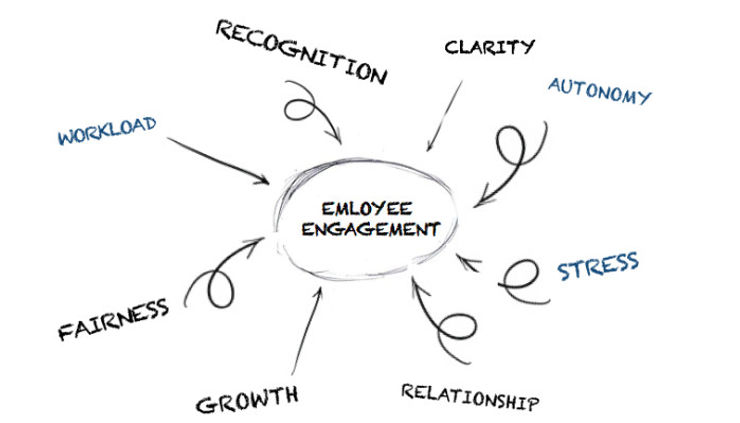‘Performance Management’ – a phrase that triggers many emotions at the workplace and beyond! A process we are more than well familiar with in the corporate world and as well across a diverse range of ecosystems: in sports, government, public sectors, education and almost any field one can think of. One area where the business and HR have a common ground is the importance of having an effective Performance Management System (PMS).
Why should we have a Performance Management System?
Why is it important to have a good PMS becomes important to understand before we decide if what we have is effective or is there an improvement required or if we even need one. The answer to this question is however not an easy one, and certainly not the same for every organization.
To manage its performance as a unit, an organization must be able to manage well the performance of its teams and individuals for achieving bottoms-up excellence in results.
Better results, meaning producing more and better products or services with the same staff strength or produce the same levels with a lesser staff strengths year on year is the ‘performance improvement’ organizations strive for. To improve performance at work, is it enough to have a motivated workforce that feels the outcomes of a PMS will be higher pay and rewards, or is there more to it. A good performance management system does not stop at the improvement of the overall organizational performance and productivity. An effective performance system must provide an opportunity to the employees to experience that they have organizational support and commitment, to receive training and development for their career growth and to receive reward and recognition for their positive efforts that drive growth in results.
The key purpose therefore for an organization to perform better year after year, is for it to grow and thus provide opportunities to it’s employees to grow and prosper with the organization.
Yet somehow, no matter how good the system might be intended to be, it is every organization’s challenge to reap the fruit of high performance year on year, using the performance management framework. More often than not the system is slow, ineffective, not understood or simply broken.
As a result, a system that is meant to align and enable the performance of various moving parts in the organization, by aligning objectives, people, resources and processes and becoming a dashboard to the managers for taking future decisions through formal and informal procedures, becomes a complex ‘need to do’ activity.
Some of the reasons where things go wrong in a Performance Management System; are
Does the performance framework align with the organizational culture?
Newer approaches are constantly emerging on managing performance and organizations want to keep up with the market trends and adopt the latest. Whether or not it matches with the organizational culture is not something that is perhaps given due thought on. For instance, requiring high level of cross functional measurements in a culture where business units work in isolation may be a wrong place to start or having no linkages to collaborative measures in a culture where teams work best jointly may demotivate the teams. The performance management system should reflect the real world work context of the organization to make it effective.
What are we measuring?
The basic principle of any performance management system is that every element included in it should be measurable, in a way that is uniformly understood at every level in the organization to enable to effective cascading and alignment from the top to the last layer, and what that remains the most common cause for the system’s lack of effectiveness is the choice of metrics. Do the metrics chosen drive high performance we are intending to drive? For example, in a credit card or life insurance business, is the frontline sales executive being measured on the # of sales leads he or she has been able to generate vis-à-vis the quality of sales conversions that are delivered in terms of the ticket size, financial stability of the client to not default, potential to cross sell, high probability references and so on.
What are we aiming at?
The targets selected for the metrics make a difference in the success or failure of the performance management system. If we aim to high, we may be setting ourselves up for failure and if the targets are an easy goalpost, we may be rewarding people for doing a bare minimum and still not achieve the organization’s mission.

Is the framework transparent to everyone at work?
For an individual to believe in the performance management process and be motivated by it, it is important to have a clear understanding of what their goals and objectives are and what do these individual goals mean to the organization. If the system is based on too many assumptions that may not be understood by all or on too many rules and processes that undermine the credibility of the human element in the business context, there may not be enough buy-in across the levels to make it successful.
Do we encourage communication and feedback around managing performance?
The most critical element around implementing a performance management system effectively is the capability of everyone involved to have a dialogue on the performance on an ongoing basis. The people managers as well as their teams need to be communicating both formally and informally on an ongoing basis about the desired outcomes, the progress towards them and the best way to make it happen.
Are you High–Performance ready?
A commitment to improve the organizational performance management system calls for various shifts in the ways of thinking about the nature of the system in terms of complexity, structures, relationships, outcomes and so on.
An effective performance management system ensures that individual and team goals are aligned with organizational goals so that performance at both the individual, team and organizational level are enhanced through effective implementation of human resource management practices.
According to a recent SHRM Research almost all organizations recognize that performance management is necessary to align an employee’s effort with the organization’s expectations. Yet, HR and people managers concede that evaluating employee performance is cumbersome and time-consuming, with few direct improvements toward employee engagement and, ultimately, performance. Is that a similar situation in your organization?
Some of the most common goals* of a performance management system (*eReward 2014) are:
- to improve organisational performance
- to align individual and organisational objectives
- to develop a performance culture
- to provide the basis for personal development
- to make informed performance pay decisions
If these or any other goals that you may have for your performance management system are being met or not can easily be assessed by our unique assessment approach. Our approach consists of multiple methodologies to assess the maturity levels and determine if the above objectives and needs are addressed, at each of the 5 stages of your Performance Management System framework.

Purpose: What is the purpose of the PMS and are the organizational goals defined and known to all Prepare: Is the policy and process well defined and are employees and managers equipped for them Plan: Are the role expectations and performance requirements defined clearly with alignment for all Pursue: Are there ongoing discussions
regarding feedback and performance evaluation Performance: What are the performance outcomes and how are they optimally utilized
Our in-depth assessment process follows a systems science approach to analyze the framework, determine the impacts of the performance management system on the organization, assess the preparedness and assess the “people and organizational” risks associated with the framework.
The approach is to collect data and analyze factors that impact the organizational performance management system to identify areas of strength as well as opportunity. The process is designed to help leaders assess the performance management process, identify organizational gaps, risks/issues and to determine what they need to do as they move through the process.
The ProventusHR HPC (High Performance Check) Assessment process steps include:
Project Mobilization—Review background material, conduct project planning, and conduct initial meetings with the client to gain insights and discuss the project approach.
Deliverable: Work plan and kick off briefing
Phase 1 Data Collection (Big Picture)—The first phase of data collection will provide a holistic, big picture assessment of the organizational performance management system. Working with an organization’s leadership, identify key stakeholders to interview. Develop interview protocols based on an organizational systems model and will investigate areas such as: External Environment, Mission & Strategy, Leadership, Organizational Culture, Organizational Structure, Performance Management Practices/Processes, and any specific areas of interest and need to the organization. Collect and analyze data and identify key issue areas.
Deliverable: Preliminary findings (key Issues)
Phase 2 Data Collection (Targeted)—After discussion and agreement with organizational leaders, conduct a second phase of data collection to gather more in-depth understanding around Performance Management System processes and practices and doing process audits, focus group discussions and key stakeholder interviews, to guide the development of alternatives and solutions.
Deliverable: Detailed findings
Phase 3 Analysis and Identification of Strategic Changes—After analyzing the more detailed data, engage the organization’s management team in a process to identify strategic changes (through working sessions).
Deliverable: Analysis
Phase 4 Action Planning—If desired, collaborate with an organization’s management team to develop action plans to address change priorities.
Deliverable: Action plans
Assessment Outcomes
The assessment puts across the maturity level of the PMS under review across 5 maturity levels with a descriptive scale, detailing the process maturity level.
Initial: The initial level is typically characterised by Inconsistency in performing practices, Displacement of responsibility and ad-hoc & Ritualistic practices with an emotional detachment to the performance management process and its impact on the organization and employees.
Managed: Frequent problems that keep people from performing effectively at a Managed level of low-maturity include: Unclear performance objectives or feedback, Lack of relevant knowledge or skill to carry out the process, poor communication and low morale and motivation to effectively carry out the process.
Defined: At the defined levels individuals and teams effectively utilise their Knowledge, skills and attributes to perform and accomplish the goals of the performance management framework, in context of the overall organizational objectives. Individuals are adequately trained and equipped to carry out the process responsibilities.
Predictable: At the Predictable Level, the organization manages and exploits the capability created
by its performance management framework. The organization is now able to manage its capability and performance quantitatively and also predict its capability for performing work because it can
quantify the capability of its workforce.
Optimized: At the Optimizing Level, the entire organization is focused on continual improvement based on the outcomes of the Performance Management System. These improvements are made to the capability of individuals and teams, to the performance management processes, practices and activities. The organization uses the results of the quantitative performance management process to guide improvements. Organizations with process maturity at this level treat the PMS as a core driver for change management.

Developing an Effective Performance Management System
With the clear view of the effectiveness of the current practice, we can help improve your Performance Management System. We use our bespoke approach using 5 D’s for helping our clients in improving the effectiveness of their PMS:
– Diagnose: Our assessment process described above takes stock of the current PMS policy and related practices to identify gaps
– Define: We articulate the specific change requirements emerging out of the findings to bridge the identified gaps
– Dialogue: We consult with all relevant stakeholders in the client organization to calibrate the results of our diagnosis and the recommendations.
– Design: We co-create the change proposal and the required solutions in the organizational context, with the stakeholders.
– Deploy: We facilitate the planning and deployment of the solutions for the larger organization.
Contact us to know how we can help you improve Performance Process, Performance Conversations and Performance Outcomes in your organization.













